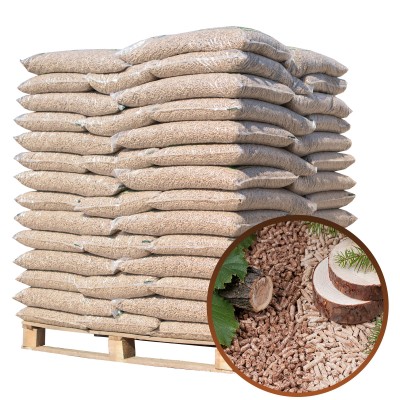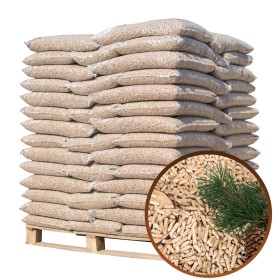
Active filters:

Fir pellets are a natural combustible biomass obtained from conifer wood, appreciated for their excellent heating characteristics and low ash production, presented in a compact cylinder, free of chemical additives and certified according to quality standards such as ENplus A1.
Main characteristics of fir pellets:
Composition and Origin:
It is produced primarily from fir wood processing waste (white or red), an environmentally friendly process that uses material that would otherwise be wasted.
Calorific Value:
It has a good calorific value, which can vary slightly depending on the specific type of fir and its density, but is generally around 4650 kcal/kg or >5.2 kWh/kg, making it an excellent heat source.
Combustion and Ash:
It burns efficiently, with an intense flame and rapid combustion, producing minimal ash residue (<0.3% - 0.7%), making stove or boiler maintenance easier.
Appearance:
Quality fir pellets appear light in color, smooth, and non-porous, indicating proper pressing and the absence of chemical contaminants.
Benefits:
It offers efficient heating, lower CO2 and sulfur emissions than fossil fuels, and its natural combustion is safe, free from harmful chemicals.
Format and Convenience:
It comes in a cylindrical shape (4-6 mm diameter, 5-30 mm length), making it easy to transport, store, and load into stoves and boilers, also allowing for automated fueling.
Certifications:
It is frequently ENplus A1 certified, guaranteeing the highest standards in terms of calorific value, low emissions, and low ash content, as well as being sourced from sustainably managed forests (PEFC).
Active filters:
